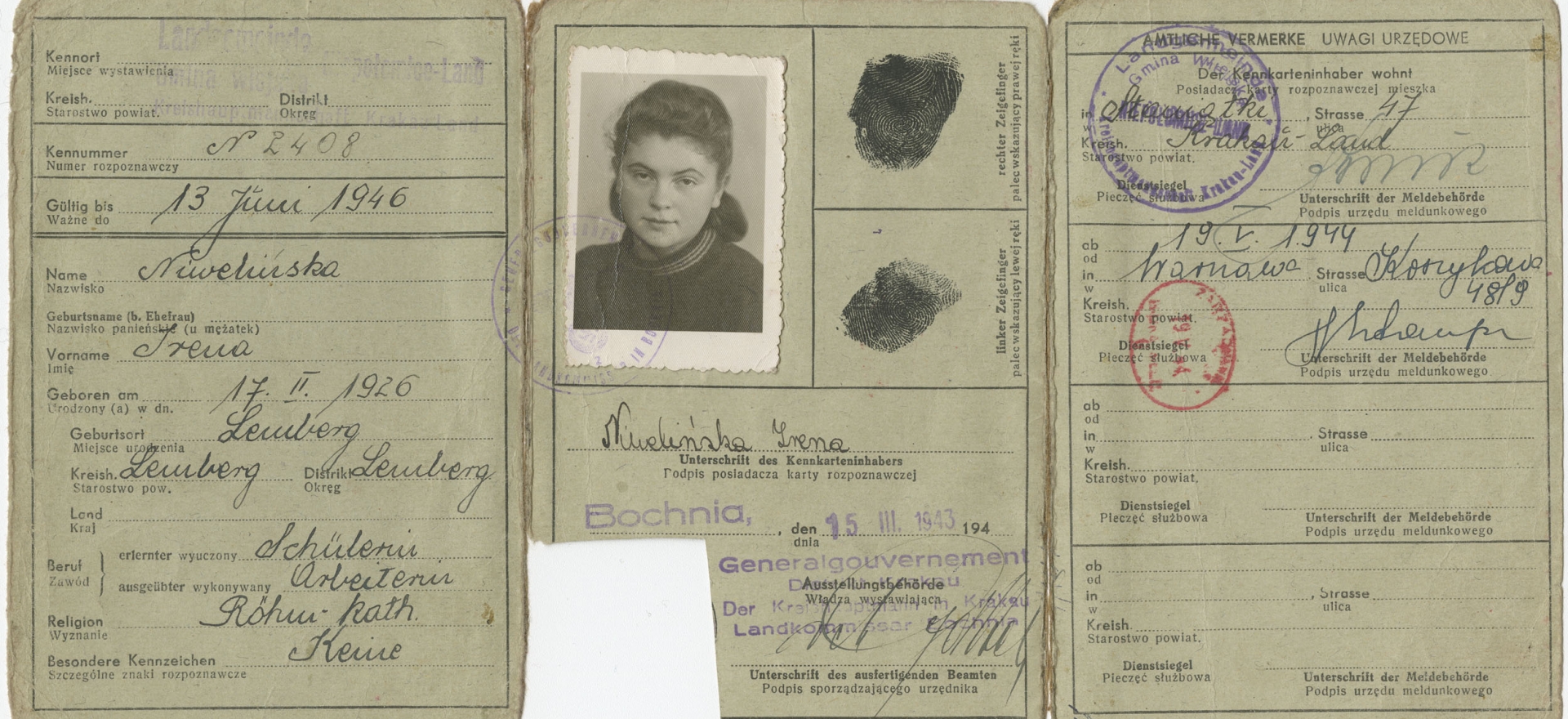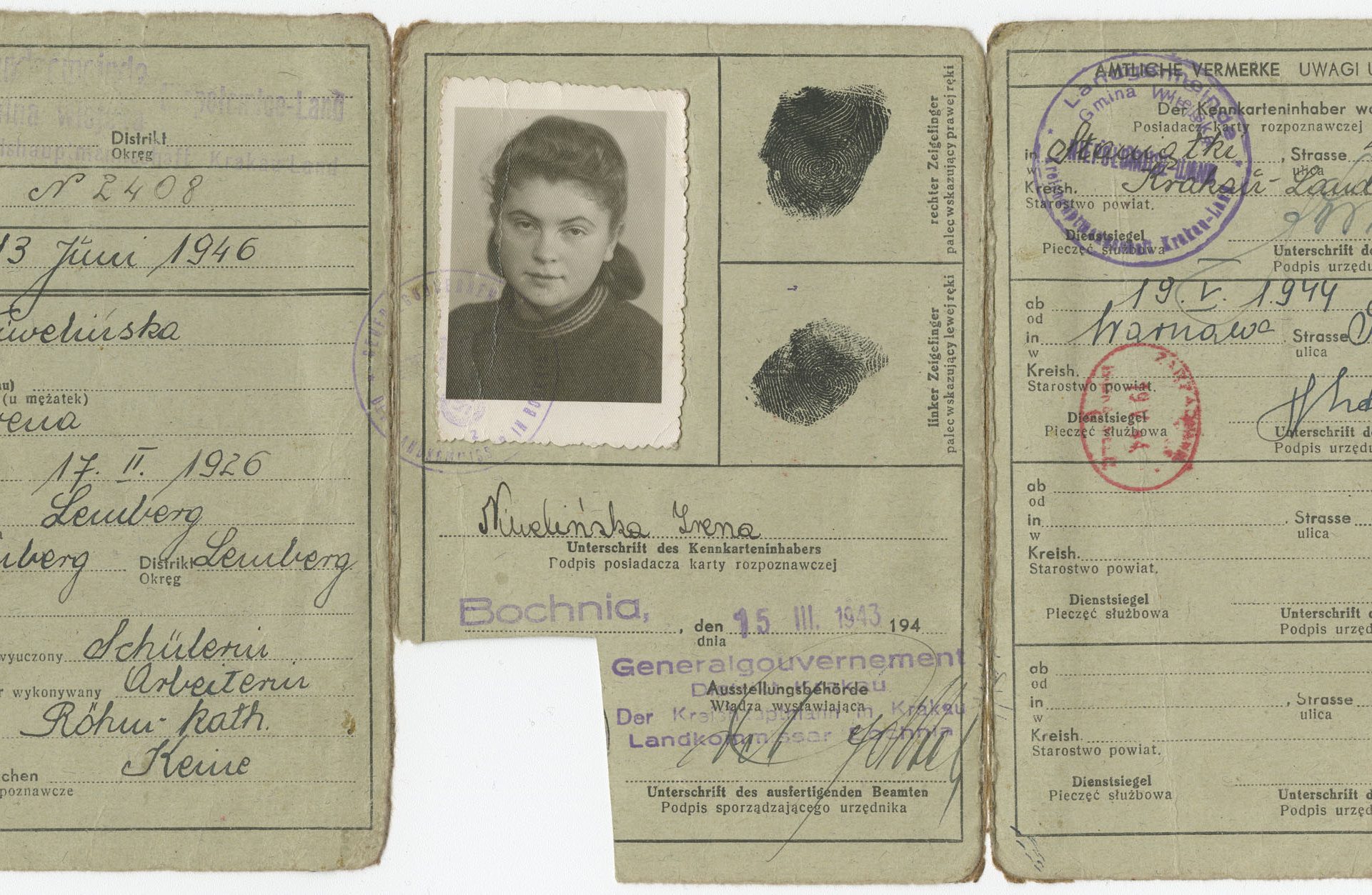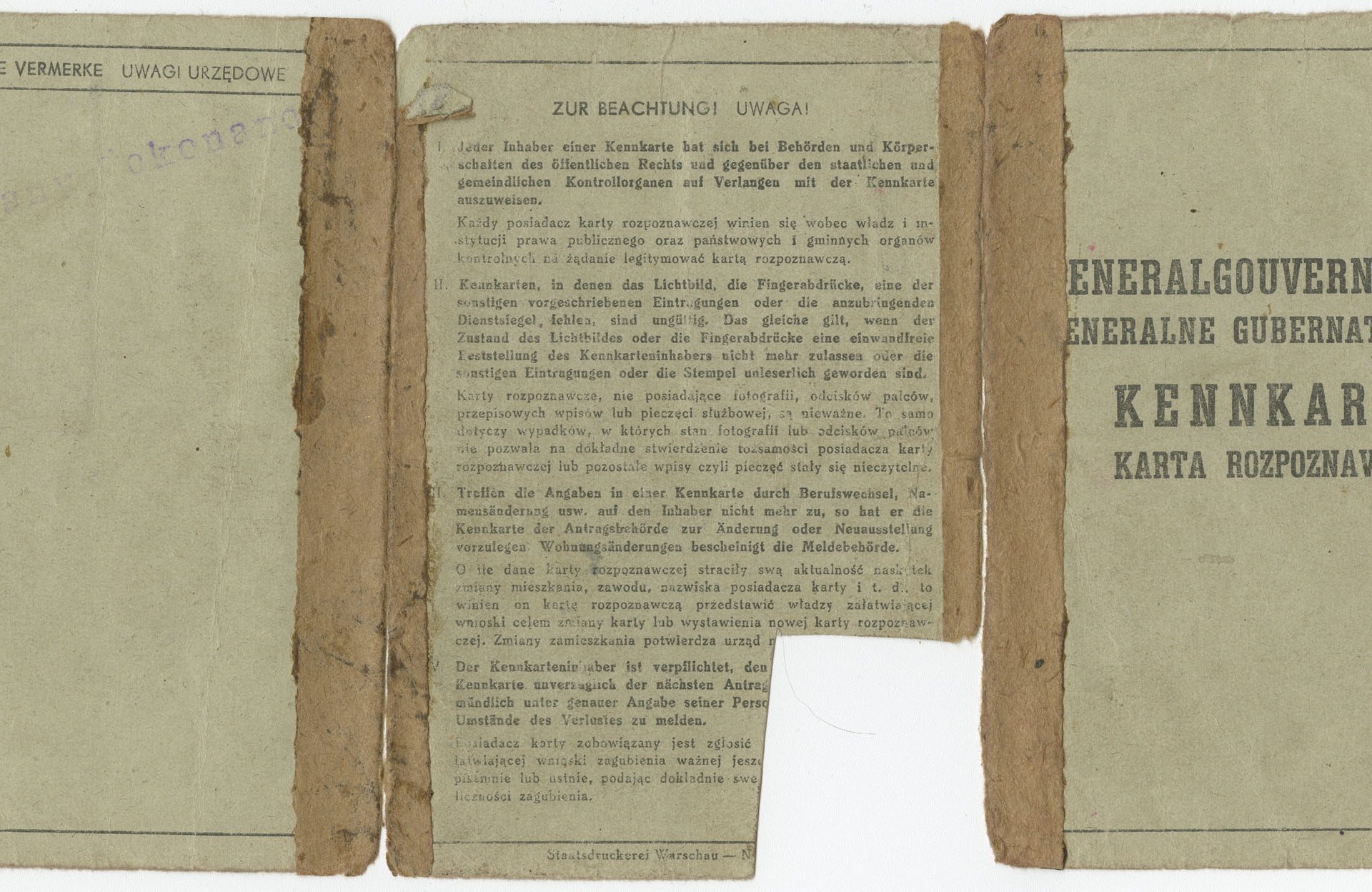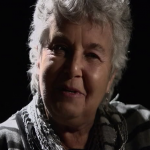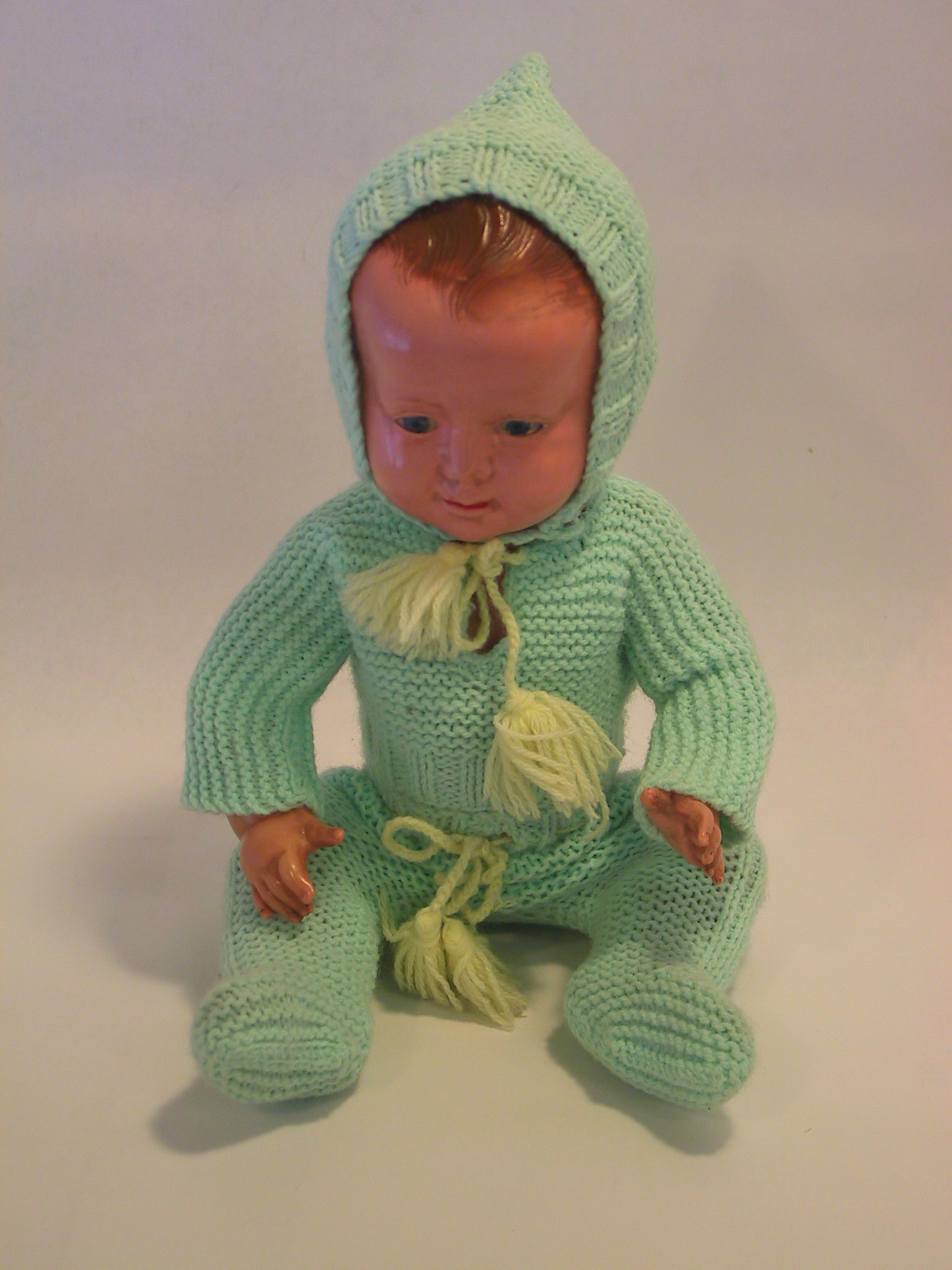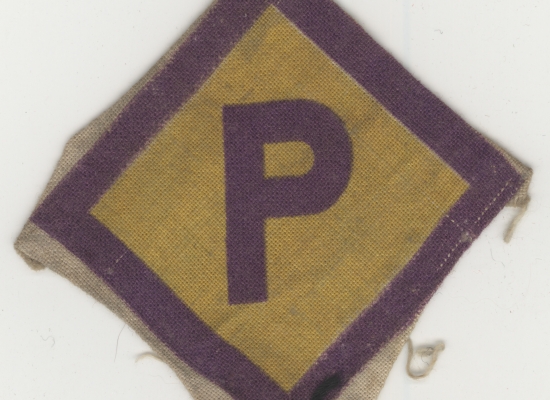This identity card from the Polish General Government belonged to Irena Niwelinska, born in 1926 in Lvov. Dina Sheres used the card to assume a false identity after escaping from the Lvov ghetto.
Life in Occupied Poland
Dina Sheres was born in 1924 and lived with her family in Lvov. When the Soviets invaded Eastern Poland, her family feared exile in Siberia and moved to the Nazi-occupied part of the country. When the German army invaded the East, the Sheres family moved back to Lvov. They were forced to live in a ghetto where Dina and her sister worked in a clothing factory. In 1942, Dina’s father bought identity papers for his children from poor Poles who were approximately the same age.
Surviving while Living in Hiding
Dina escaped the ghetto and boarded a train to Warsaw. On the way there, a man informed her that the Gestapo would verify the passengers’ identities before arriving in the city. The man lived in a neighbouring village and offered for her to live in his home and work. Months later, the Gestapo searched Dina’s room while she was absent and demanded that she report to the authorities the following day. Dina fled for Warsaw and found work as a maid. She stayed there until the Polish uprising of August 1944. Dina’s parents, her brother and sister were all killed in the Holocaust.
After liberation, Dina went to Lodz, Vienna, Austria, and then Italy. She met her future husband who had family in Canada, and they were able to immigrate.
Dina Sheres donated this document to the Montreal Holocaust Museum in 2004.
This project is part of the implementation of the Plan culturel numérique du Québec.
